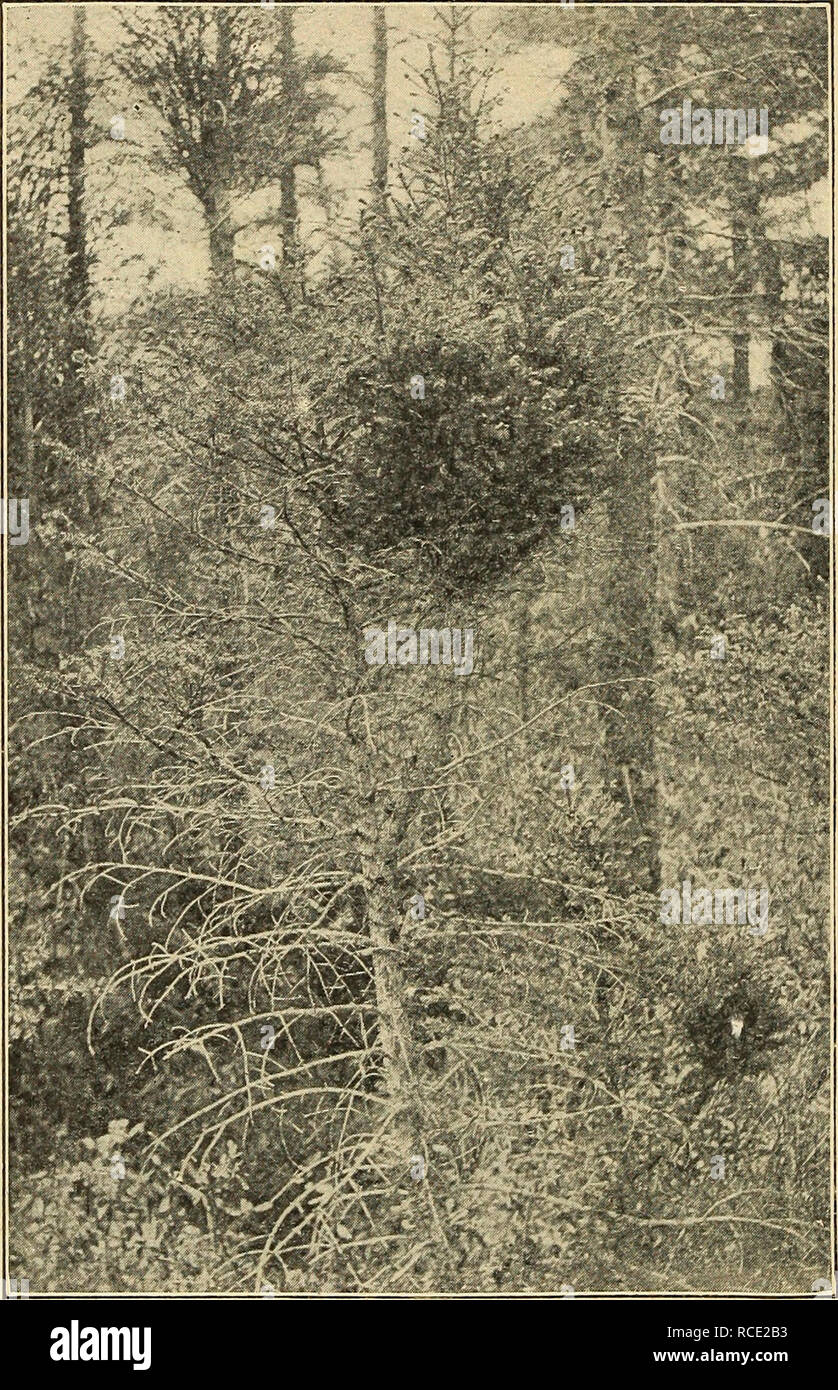. Diseases of deciduous forest trees. Trees. 16 DISEASES OF DECIDUOUS FOREST TREES. There are also a considerable number of smaller mistletoes belong- ing to the genus Arceuthobium which are widely distributed through- out the country. Of these there are two which may be especially mentioned: Arceuthobium cryptopoda Engelmann and A. pusiUum Peck. The former is known to occur in various sections of the Rocky Mountains and is injurious to a number of different conifer- ous hosts; the latter seems to be an eastern form, limited more or less closely to the Appalachian Mountains, and is definitely

Image details
Contributor:
Paul Fearn / Alamy Stock PhotoImage ID:
RCE2B3File size:
7.2 MB (838.1 KB Compressed download)Releases:
Model - no | Property - noDo I need a release?Dimensions:
1270 x 1968 px | 21.5 x 33.3 cm | 8.5 x 13.1 inches | 150dpiMore information:
This image is a public domain image, which means either that copyright has expired in the image or the copyright holder has waived their copyright. Alamy charges you a fee for access to the high resolution copy of the image.
This image could have imperfections as it’s either historical or reportage.
. Diseases of deciduous forest trees. Trees. 16 DISEASES OF DECIDUOUS FOREST TREES. There are also a considerable number of smaller mistletoes belong- ing to the genus Arceuthobium which are widely distributed through- out the country. Of these there are two which may be especially mentioned: Arceuthobium cryptopoda Engelmann and A. pusiUum Peck. The former is known to occur in various sections of the Rocky Mountains and is injurious to a number of different conifer- ous hosts; the latter seems to be an eastern form, limited more or less closely to the Appalachian Mountains, and is definitely known to occur from the Canadian border to southeastern Penn- sylvania. The differ- ent species of Arceu- thobium resemble each other very much in their habits of growth, their manner of seed dispersal, and their effect upon their hosts, so that we may take the best-known form, Arceuthobium pusil- lum, as a type of this group (77). The seeds are coated with a muci- laginous substance. Upon ripening they are projected for sev- eral feet from the seed capsules, and alighting upon an adjacent branch or twig they stick tightly to the bark and there germinate. They may also be sometimes carried by birds. The young plant pierces with its holdfast the bark of the twig upon which it is seated and establishes communication with the living por- tions of the twig. It is thus enabled to feed upon the sap of its host, and in this way a considerable amount of food material is diverted from the outer end of the affected branch to the parasite. About the point of infection a number of branchlets develop, and in the course of a few years there is formed a compact, bushy mass of twigs which 149. Fig. 2.—A black spruce tree with a large witches' broom caused by dwarf mistletoe.. Please note that these images are extracted from scanned page images that may have been digitally enhanced for readability - coloration and appearance of these illustrations may not perfectly resemble the original work.